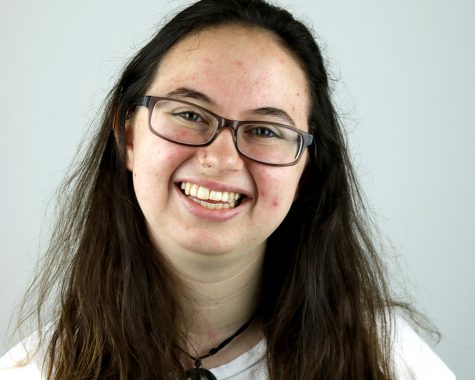CAA discusses interdisciplinary programs, geology and geography
November 2, 2017
A lack of faculty members has left the geology and geography department with some challenges, but they have been working on keeping the program up-to-date, according to Diane Burns, chair of the geology and geography department.
Burns presented her programs’ evolution over the past couple of years to the Council on Academic Affairs.
Before the budget impasse, the geography department was able to update and renovate their labs, which along with the faculty and the material, has led to the program being ranked second out of the seven geography programs in Illinois, Burns said.
Burns said the goal of this program, and of geology as well, is to help students in their respective areas to make a better and cleaner future.
“We deal with the earth, both sides, and we’ve got the past. We’re trying to shape the future by understanding the present and the past together,” she said.
The geology department has been able to get new equipment through government organizations that order a surplus of equipment and only charge shipping costs.
Burns said this helps the department better manage its resources.
Both programs are short faculty members, but geology only has one full-time faculty member. As Burns is a chair, she has a half-time load. The other geology faculty member is half-time as well, because she also works as a teacher coordinator.
Burns said the two majors are “discovery majors” that students often do not discover on their own. Instead, they find them through required general education classes.
Both programs have openings in future careers, with the need for careers in geographic information systems increasing 30 percent since 2014, and a shortage of 95,000 geology-related employees estimated for 2020, Burns said.
The geography department has been working to increase online classes to allow students to get a degree from a distance.
Two former geology faculty members left a week before the start of the semester.
Burns said the remaining faculty members are trying to make the best out of the time they have.
“We need to make sure that we can still deliver a good program with a very few number of faculty,” she said.
Both programs have seen ups and downs with enrollment, but Burns said that while the overall campus enrollment was down 5 percent, the geology program was up 3 percent.
The sociology and anthropology department’s name was changed to sociology, anthropology and criminology, which according to the proposal is a change driven by the addition of the bachelor’s in criminology which was added to the curriculum this fall.
The last item for discussion was a request of the CAA to better define interdisciplinary majors and how one should go about updating or changing programs that span across multiple departments.
The concern for committee members is that the way it is now, a faculty member could change a program that might affect another department without talking with that department or notifying them.
CAA bylines state that if a program update involves another college, the department proposing the changes must go through the dean of the other college, the chair of the specific department and the department’s curriculum chair.
Many CAA members brought up that this policy had not been enforced for some time, and that it might not be specific enough to include majors and minors.
The discussion was tabled, with geography co-director Barry Kronenfeld offering to write up a potential byline that would address these concerns.
The CAA D2L page provided members with concerns about open meeting laws, because it was difficult for the general public to access.
The agenda and meetings will go back to being posted on the CAA website.
Brooke Schwartz can be reached at 581-2812 or bsschwartz@eiu.edu.




































































